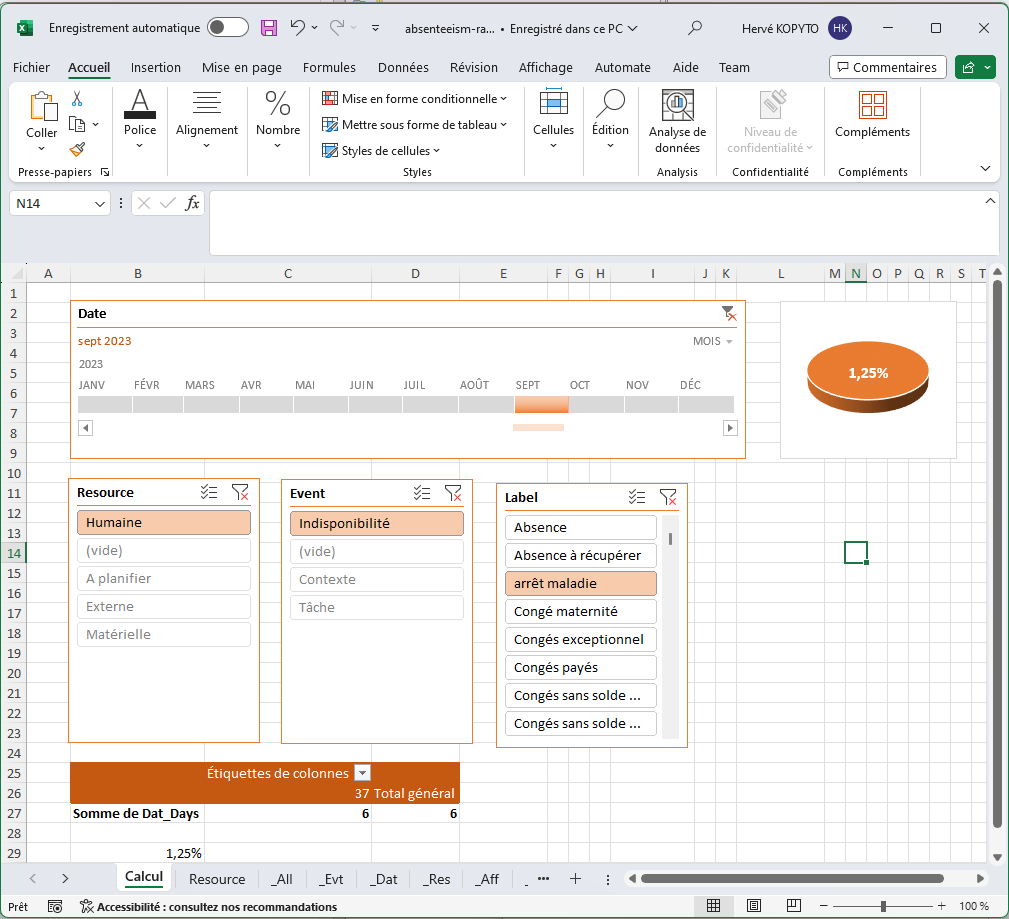Absenteeism rate template
Find out what an absenteeism rate template is, how to calculate it using Excel and its usefulness in human resources planning.
Download this Excel PivotTable template
Theme : KPI Features- Put in table form
- Conditional formatting
- Timeline
- Segment
- Percentage
- Days : Dat_Days
What is an absenteeism rate template?
The absenteeism rate is a key indicator for managers and human resources departments, enabling them to measure employee presence at work and assess the effectiveness of personnel management policies. It is an essential tool for planning and optimising human resources.

How is the absenteeism rate calculated?
The absenteeism rate is generally calculated using the following formula:
Absenteeism rate = ( Number of days absent / Number of working days ) ◊ Number of employees ) ◊ 100
Software such as Excel can be used to calculate this rate. With Excel, you can create a table showing the absences of each employee and then, using a pivot table, easily analyse the data. Specific software such as PlanningPME can also be used for more precise monitoring and more in-depth analysis.
Who uses absenteeism rates?
The absenteeism rate is a crucial indicator used mainly by the following entities within organisations and companies:
- Human Resources (HR) departments : They use the absenteeism rate to measure and analyse absence trends within the company. This helps to identify potential problems such as employee dissatisfaction, unsatisfactory working conditions, or health issues that may require intervention. It can also provide information on the effectiveness of existing absence management policies and help develop new strategies to improve attendance at work.
- Managers and supervisors : They use this indicator to manage their team's resources more effectively. The rate of absenteeism can influence the planning of working hours, the need for additional staff and the redistribution of tasks. It also helps to identify employees who may have chronic absenteeism problems, requiring specific attention or intervention.
- Executive management : Senior management can use the absenteeism rate to gain an overall view of employee satisfaction and commitment. It can also be used to assess the impact of absences on productivity and overall business performance.
- Analysts and planners : They can use the absenteeism rate to anticipate future workforce requirements and adjust planning and strategy accordingly.
- Human resources management consultants : They can use the absenteeism rate to provide strategic advice on absence management and suggest improvements.
- Resource scheduling systems : These systems use absenteeism rates to optimise resource planning and ensure that projects and operations continue to run efficiently despite absences.
The absenteeism rate is therefore an essential tool that helps to maintain a high level of productivity and commitment, while ensuring the well-being and satisfaction of employees.

